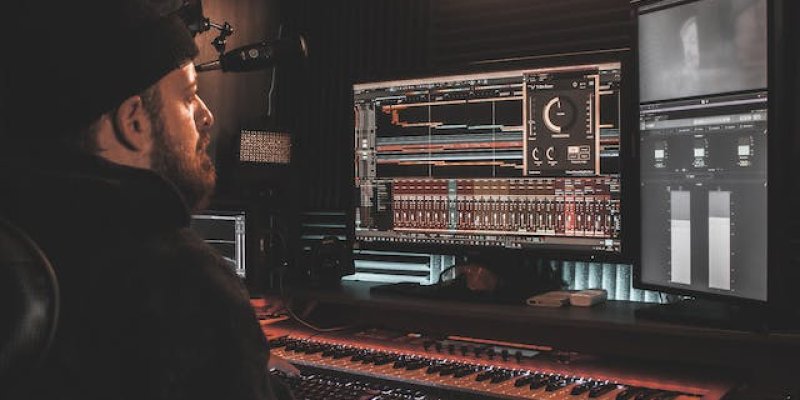
Modern music production involves almost too many techniques to enhance the quality and clarity of audio recordings. Still, you don't want to miss out on all the powerful tools available to you.
One crucial aspect that you have probably heard about is compression, which is a tool that plays a big role in shaping the sound of a track.
It can seem a bit overwhelmingly technical for newbies, so let's discuss the concept of compression, explore its applications in DAWs through plugins, compare it to gating, and provide valuable tips on using compression effectively.
Compression in music refers to the process of reducing the dynamic range of a sound signal. Dynamic range is the difference between the loudest and softest parts of a sound.
Compression helps to control this range by attenuating the louder parts and boosting the softer ones, resulting in a more balanced and consistent audio output.
In simpler terms, compression helps maintain a steady volume level, enhancing the overall clarity and impact of a track.
Parameters You Will Find In Compressors:
Threshold: Determines the level at which compression begins to take effect.
Ratio: Specifies the amount of compression applied once the signal exceeds the threshold.
Attack Time: Controls how quickly compression engages after the signal surpasses the threshold.
Release Time: Dictates how rapidly compression stops once the signal falls below the threshold.
Digital Audio Workstations (DAWs) provide a range of tools and plugins to manipulate audio signals, and compression is no exception.
Compression plugins in DAWs offer a user-friendly interface for controlling parameters such as threshold, ratio, attack, release, and makeup gain.
These plugins allow producers to apply compression to individual tracks or the entire mix, tailoring the sound to meet their creative vision.
All DAWs come with a built-in compressor, but many producers and engineers like to download more advanced compressor plugins for high quality.
Here's something that used to trip me up when I first got into audio engineering. Compression and gating are both dynamics processing techniques, but they serve distinct purposes.
Compression focuses on controlling the overall dynamic range, giving a smoother and more balanced sound.
On the other hand, gates are used to eliminate unwanted background noise by attenuating signals below a certain threshold.
Compression reduces the dynamic range of an audio signal by softening the louder parts while boosting the softer ones.
Gates soften or mute a signal when it falls below a certain threshold, effectively reducing or eliminating background noise during silent parts of a song.
They both rely on a threshold setting to determine when to take action. Attack and release times are also crucial parameters in both processes, influencing how quickly the effect is applied and removed.
Set the Threshold Thoughtfully: Adjust the threshold to control when compression begins. Lowering the threshold allows compression to engage earlier, affecting a greater portion of the audio signal.
Experiment with Ratio and Attack/Release Times: The ratio determines the amount of compression applied, while attack and release times influence how quickly the compression reacts. Experimenting with these settings can significantly impact the character of the sound.
Use Compression in Moderation: Applying too much compression can result in a lifeless and unnatural sound. Go for a balance that enhances the dynamics without sacrificing the original character of the audio.
Consider Parallel Compression: Blend the compressed signal with the original using parallel compression to maintain some of the natural dynamics while benefiting from the controlled elements.
Multiband compression is a sophisticated technique that involves dividing the audio signal into multiple frequency bands, each with its dedicated compressor.
This allows for precise control over the dynamics of specific frequency ranges, offering a more nuanced approach to shaping the overall sound.
Sidechain compression is a powerful tool that involves using the dynamics of one track to control the compression of another. This technique is commonly used for creating a "pumping" effect in electronic music.
Automating compression parameters over time can add a dynamic and evolving quality to your mix. This technique involves changing compression settings at different points in the song to adapt to the changing dynamics.

As a session singer, writer, and producer that has worked with over 300 clients to provide high-quality jingles, singles, and features, Yona spends her time creating and marketing new music and helpful resources for creators. Check out Yona’s latest releases on her Spotify, her Youtube and share if you like it!
If you are in need of singer, songwriter or song producer services, see what Yona Marie can offer you on her services page.